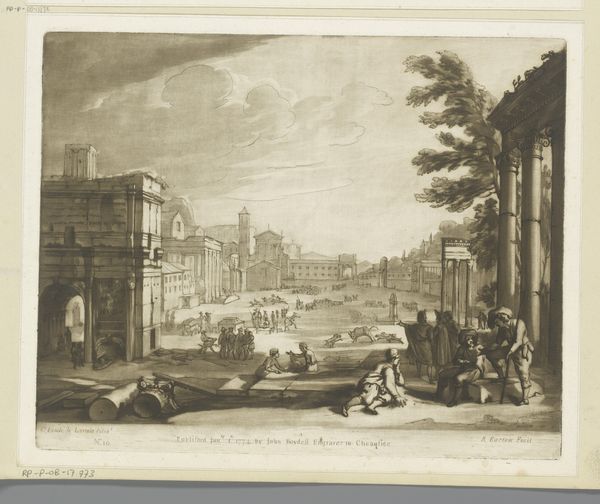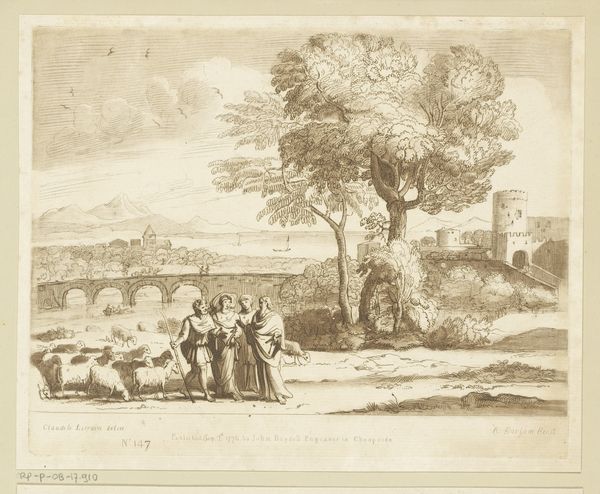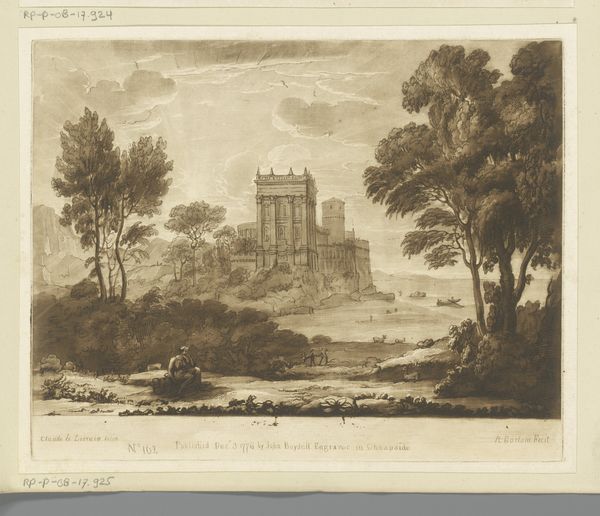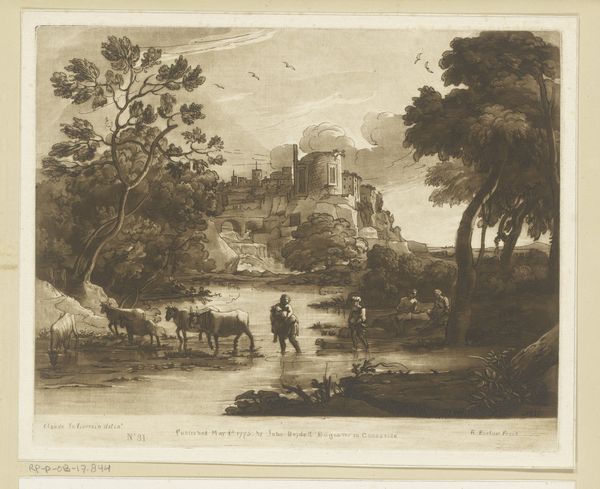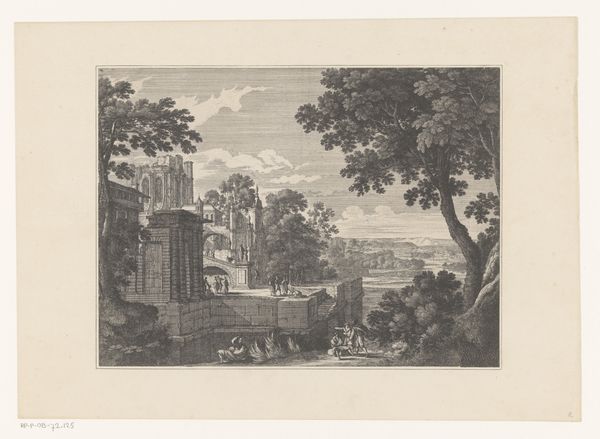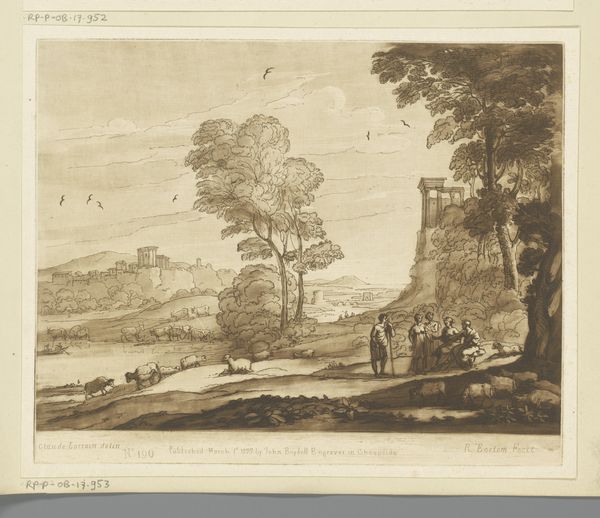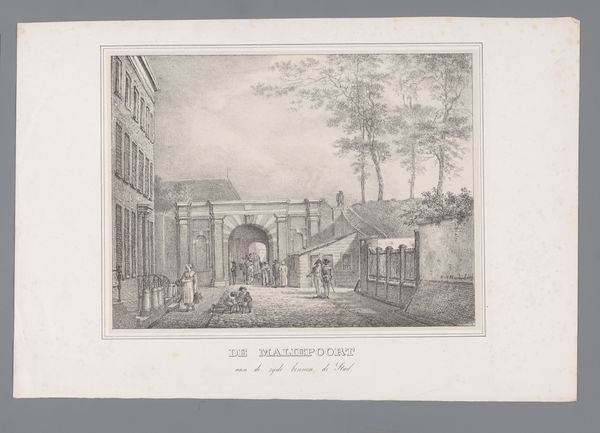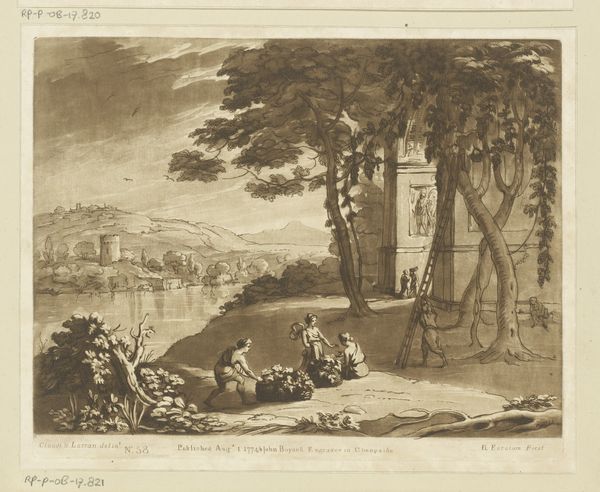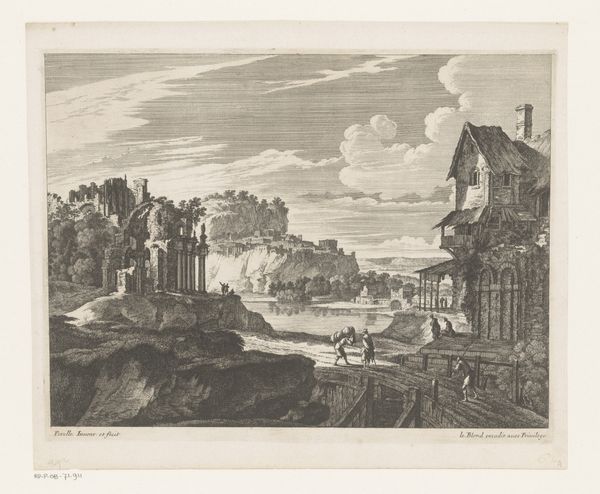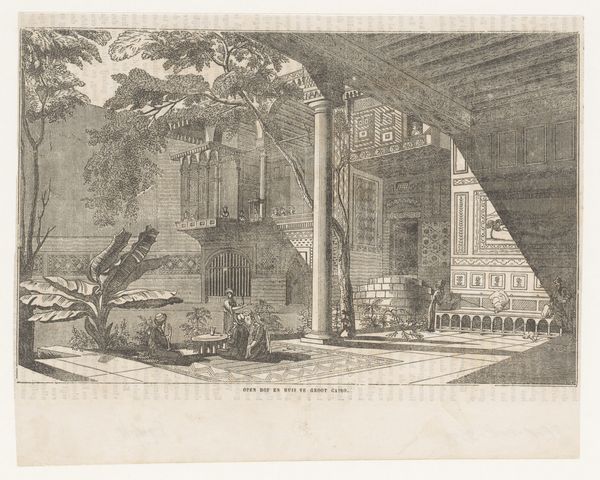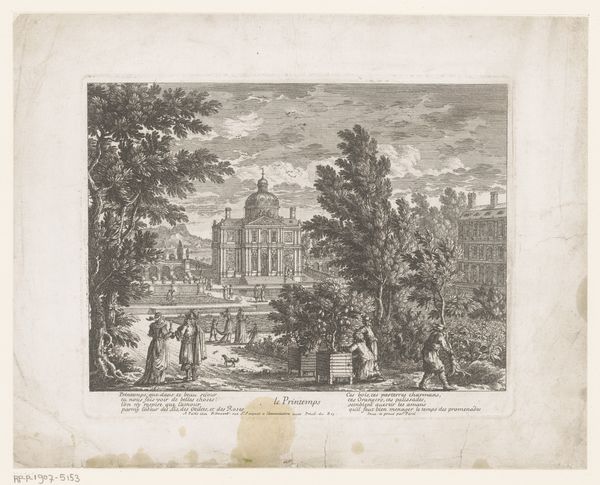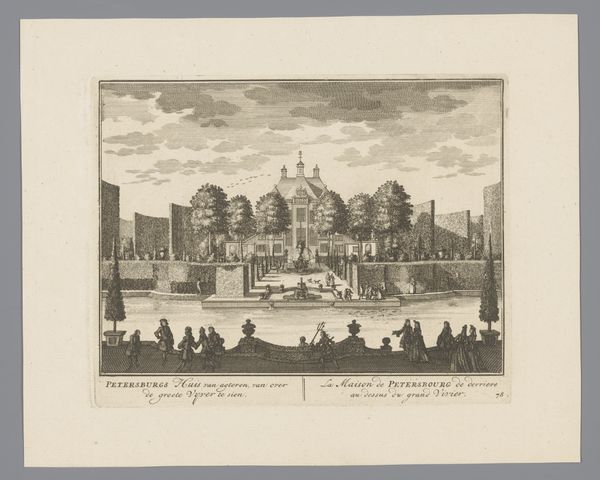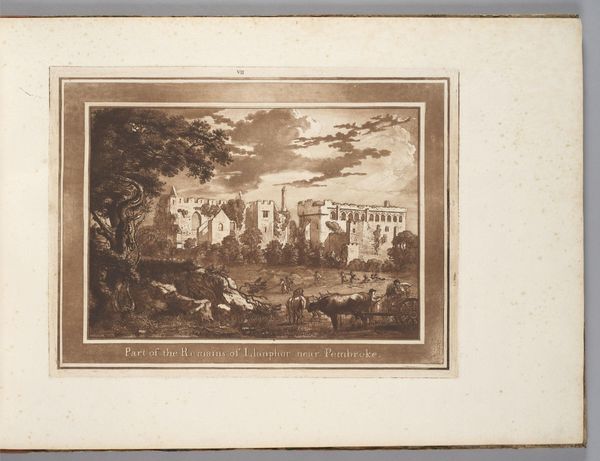
print, etching
#
neoclacissism
# print
#
etching
#
landscape
#
figuration
#
cityscape
#
history-painting
Dimensions: height 207 mm, width 258 mm
Copyright: Rijks Museum: Open Domain
Curator: Up next, we have an etching from possibly 1776, "Koningin Esther nadert het paleis van Ahasuerus" or, "Queen Esther Approaches the Palace of Ahasuerus," made by Richard Earlom. Editor: It feels almost dreamlike. The monochrome sepia tones lend a softness, despite the grandeur of the architectural details. I get a real sense of scale, of figures dwarfed by something far bigger than themselves. Curator: Exactly! This is Earlom interpreting a work by another artist, in this case, it illustrates a biblical narrative within an idealized cityscape. Look at the way he uses line work—the etching technique really allows for fine detail in the buildings and the landscape. But for all the detail, the figures have less individualized detail than those urns that sit upon the retaining wall. Editor: Yes! That reminds me how humans navigate their spiritual selves in relation to power and history. The almost subservient pose of the figures really makes that connection evident. But tell me more about the symbolism, especially in a biblical context. Curator: Esther, in the Old Testament, risks her life approaching the king to plead for her people. That palace looms as a symbol of absolute authority, and it's interesting to consider how Earlom plays with the perspective to amplify that power dynamic. The architecture embodies power, doesn't it? Almost menacing in its scale, while those classical forms remind us of empires long gone. Editor: There is a push-pull of emotional signals within that reading. That could suggest our constant negotiation between vulnerability and fear when confronted by structures much larger than ourselves. In our current times, is that less about an earthly king and more about economic systems? Curator: Or even ecological ones! And that subdued color palette works so well; the somber mood really supports those more contemplative ideas. Earlom seems to use the classical lines and landscape as a stage for our more introspective moments. Editor: Yes, that visual choice echoes what still seems to haunt humanity and shape how we move within our spaces. A really stunning and quite relevant reflection when you think about it!
Comments
No comments
Be the first to comment and join the conversation on the ultimate creative platform.
